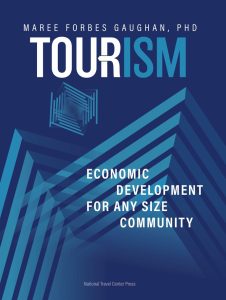I expect the premise taken in this post will be a bit controversial but hear it out. We’re all familiar with brands like Coca-Cola, Tide, Amazon, Apple, Ford, Bounty, Charmin, Hilton, and Hyatt for which massive advertising budgets have created instant identification. Those with seemingly unlimited resources can still do this, even within today’s marketing noise.
Rural communities don’t have this luxury, nor do most have an identification that immediately resonates with potential visitors. Many have tried to remedy this by spending a lot of money that could have been used more effectively for other purposes, ending up merely transferring So and So County CVB into Discover So and So, or Explore So and So, after a long and expensive process that just reflects the place name. Neither of these do the job, since visitors still don’t know what is unique about the community or what it offers.
So let’s think differently about the brand of a rural community. Rather than relegating it to a logo and tagline that has little relationship to the experiences offered – let’s equate the brand of a community with the experience offered; an experience focused on the uniqueness of the area. That is what visitor will equate the community with when they visit because the experience they have, is the only reference point they have. The experience becomes, in the minds of visitors, the brand.
Because the experience is the brand, the experience that exemplifies the brand must be created and delivered to reflect how the community wants visitors to think about the community and how the community wants visitors to experience the community.
I understand this may be a dramatically different way of viewing branding – and one that certainly negates the age-old line “we have something for everyone.” Yet this approach will distinguish one community from another in the only way possible – by featuring what is unique for the visitors that they cannot get elsewhere – the reason visitors travel to explore new places.

